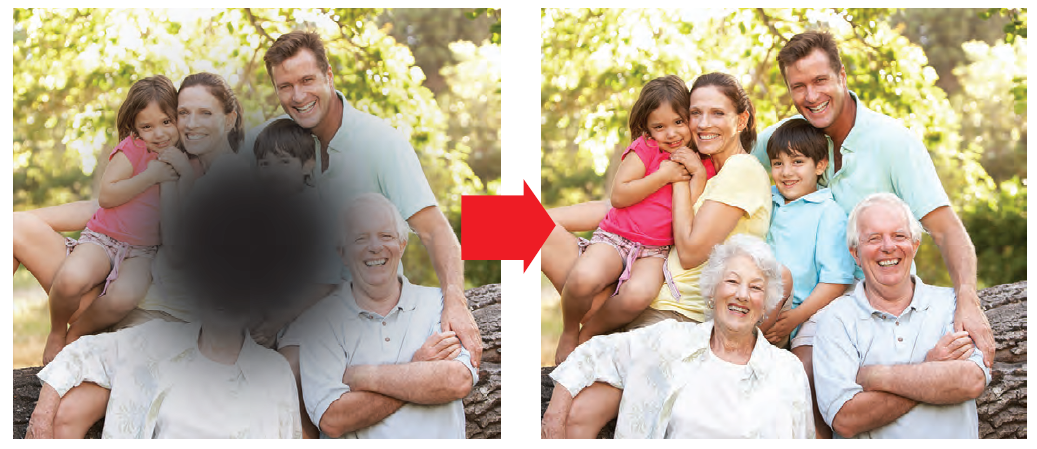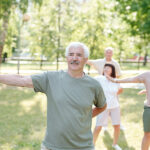January 2, 2012
By David Blyweiss, M.D.
In This Issue:
- The one resolution that could dramatically change your life
- The secret to keeping your New Year’s resolution this year
- A special holiday gift for you to keep…and share
Make Your New Year’s Resolution… and Keep It This Time
This time every year, millions of people resolve to improve their health. Gym memberships surge. Dieting book sales and Weight Watchers memberships skyrocket. And for a week or maybe even a month, we all do our best.
But in most cases, our best doesn’t get us very far.
MD Exposes the Hidden Danger to Your Eyes

When your eyesight starts to fail, it's a real problem. Suddenly you can't go to the grocery store... you can't get to the doctor if you have an emergency... you can't meet your friends for dinner…
Your "regular" doctor doesn't have time to keep up with the latest research. And the same goes for eye doctors. They go to school to learn how to fit you for glasses and contacts, but have no way of preventing the damage and loss of eyesight that threatens your freedom and independence.
Let me show you something that explains a LOT about how your eyes work.
In my FREE Special Report, I'll show you a HUGE, untapped resource for your eyes that safely and naturally restores clear, effortless eyesight.
Click here to get started...
One study showed that about 75 percent of people stick to their goals for at least a week, and that number dwindles to 46 percent still on target six months later. Informal surveys by popular magazines estimate only a persistent 8 percent make it through the whole year.
Today, I’m inviting you to join the 8 percent… and I’m going to give you a comprehensive guide to help get you there.
First, I’m going to suggest you take on a simple, no frills resolution. Just the basics… really. But it has tremendous power to help you protect yourself against cancer, diabetes, heart disease, and a whole host of autoimmune and chronic disorders that are stealing quality of life from millions:
Eat the right diet, gently move your body, and sleep 8 hours a day.
I say “simple” knowing full well that the specific recommendations may be challenging.
They will take a little effort, and a lot of support.
The World's Quickest Solution for Ending Prostate and Urinary Misery
This has recently been revealed to be one of the only real breakthroughs in prostate health.
The seeds of a strange fruit (sometimes called "Chinese Apples") hold powerful phytonutrients that are a revolution in prostate health.
In fact, UCLA and Veterans Administration research have now proved this to be true.
Not only that, but it may be the worlds quickest solution for ending prostate misery.
Simply stated, these phytonutrients represent a huge step beyond beta sitosterol, saw palmetto, and other phytosterols alone.
Simply click HERE if you want to have fast prostate relief...restful, uninterrupted sleep...no more constant "urges to go"...enhanced virility...and optimal prostate support for life.
But the gains could be extraordinary:
- Improved mobility for the rest of your life
- Natural protection against many of the chronic ailments facing Americans today
- Improved energy, better moods, sharper thinking
- Less reliance on pharmaceuticals
- Easier weight management
Now, there are a few things to know in order to commit to and carry out this resolution. That’s why I’m going to dedicate the next couple of weeks to break it down and give you the blueprint for success. Follow these guidelines and you can become one of the 8% of people who successfully transform a New Year’s Resolution into a lifelong positive health habit.
Yesterday, I sent you a New Year’s gift – the entire Resolution Report in a free downloadable report. If you haven’t already claimed it, do so now by clicking here. It has a few extras that I can’t include here in the newsletter, such as a way to chart your progress, and keep track of your test results and other ways to manage your health throughout the year. I invite you to print it and keep it around for future reference…and also, to invite a friend to join you.
Having a buddy share this resolution with you is the secret key to your success. How do I know? Let me tell you about what a colleague of mine – another Functional Medicine physician – discovered when he offered educational information, much like what I’ll be sharing with you, to a very large church in California.
He issued a similar challenge to the members of the church – to take on this simple resolution and in exchange, he would provide the information on how to carry it out – and 14,000 of them agreed to participate. Overwhelmed by that number, he had them break down into smaller groups of 20, and made sure all the group members lived in the same neighborhood. They met weekly to review the information provided by the physician, and they paired up for daily walks and general support.
After 6 weeks, the church members collectively lost a quarter million pounds of fat. More than half were able to stop taking meds for hypertension, diabetes and heart conditions. Just by following the same basic guidelines I’ll be sharing with you… and leaning on each other for support and camaraderie as they did it.
I’m convinced this kind of approach could change the health of the nation. So I decided to offer it to you in hopes you will accept the challenge, share it with a friend, and have the same success.
More than ever, health is a choice. It comes down to what you buy at the grocery store, how much you pay attention to how you feel, how committed you are to helping your body be and stay healthy.
I’m also well aware that we face new threats to our health, some of which are beyond our control. Environmental toxins, genetically-altered food that isn’t always clearly labeled, suburban living that keeps us in our car instead of on our feet, our 24/7 culture of stress, and the symbiotic relationship between pharmaceutical companies and healthcare providers – there’s no denying it, the odds are stacked against us.
But you have me here, to keep you up-to-date on the latest health imperatives and the most solid recommendations I know for optimal health.
You have other people in your life who love you and want you to be around for a long time. And you have – or can find – people who share your commitment to health, and who are willing to pair up with you on turning your resolution… into a lifetime habit of healthy living.
Resources:
Norcross JC, et. al. Auld lang syne: success predictors, change processes, and self-reported outcomes of New Year’s resolvers and nonresolvers. J Clin Psychol. 2002 Apr;58(4):397-405.






